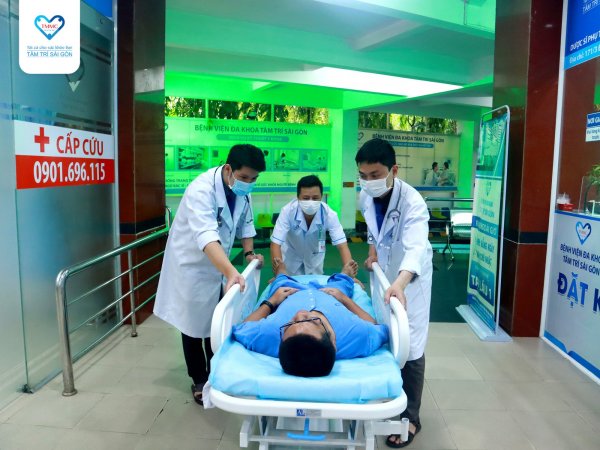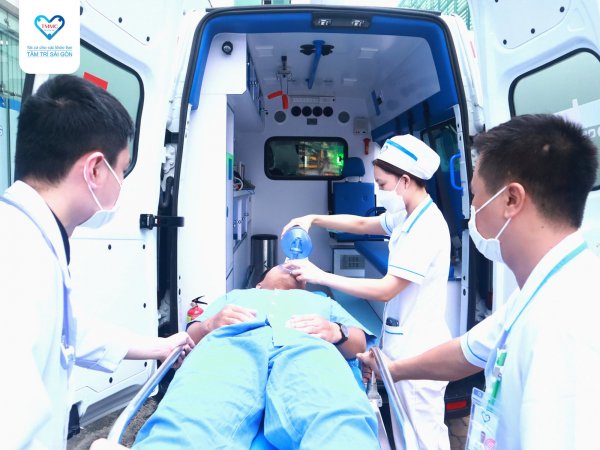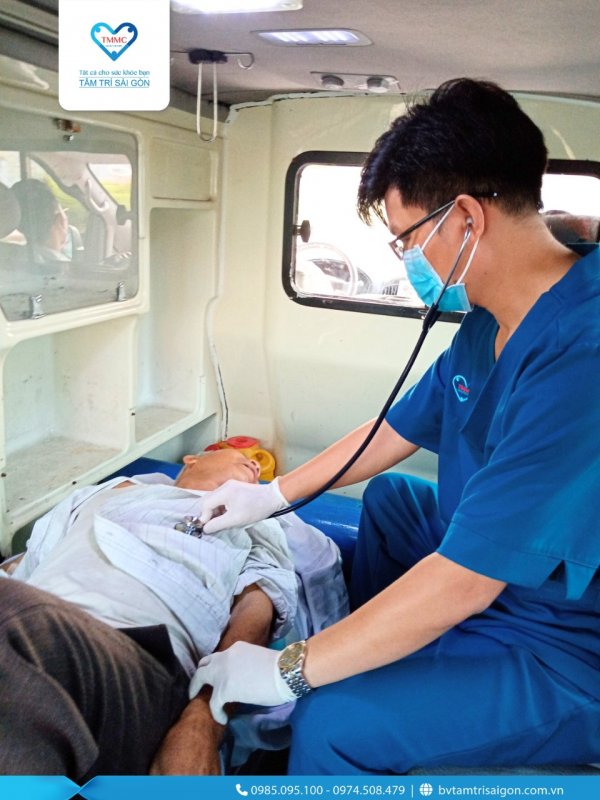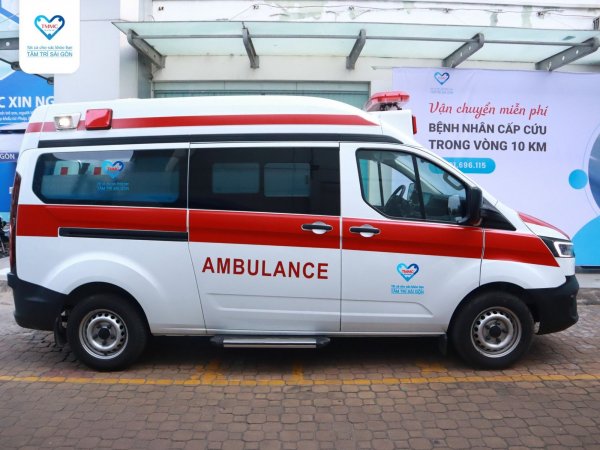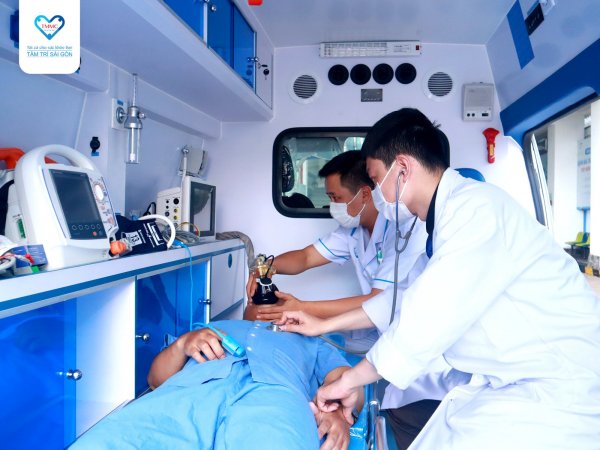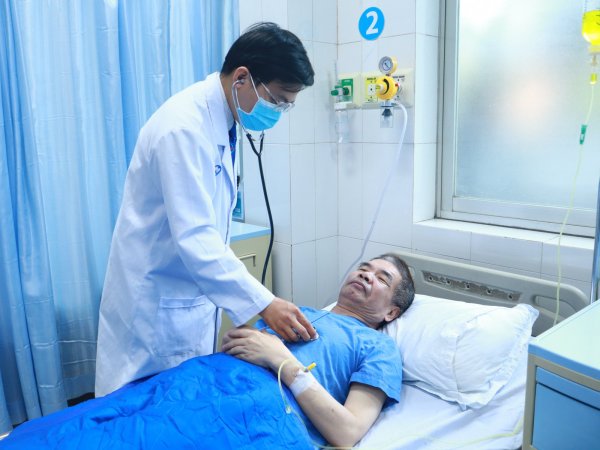- The Best General Health Check-up in District 12 at Tam Tri Saigon Hospital
- Vaccine Packages for Children Aged 2 to 24 Months
- Dental Care Packages
- Medical Examination Packages
- Disease Screening Packages
- Complete Maternity Care – Peace of Mind for a Safe Delivery at Tam Tri Saigon
- Partnering in Corporate Health Care
- Pre-Marital Health Check-up Package
- Emergency Medical Services Available 24/7
- Các gói khám sức khoẻ
Emergency Medical Services Available 24/7

The 24/7 Emergency Service at Tam Tri Saigon General Hospital operates based on the following foundations:
-
A team of emergency doctors and nurses on duty 24/7, including public holidays and Tet (Lunar New Year)
-
Fully equipped emergency and intensive care units with modern medical technology
-
Modern and specialized ambulances
-
Emergency patient transfers upon request, both domestically and internationally
-
On-site emergency medical support for events and community festivals
-
First aid training programs for workplaces, organizations, and schools
-
24/7 detox and food poisoning treatment clinic
Stroke emergency care within the golden hour
In many cases, due to the distance from the hospital, while waiting to get to the emergency room, the Emergency Department of Tam Tri Saigon General Hospital will guide how to provide first aid for common household accidents as follows:
-
Burns
First, determine the severity of the burn before giving first aid, as different degrees of burns require different treatments.
For minor burns: The skin turns red and may be accompanied by swelling, pain, or patchy redness, causing pain and significant swelling. The wound diameter is usually no larger than 5-8 cm. In this case, cool the burn with cold water or apply a cold compress for at least 20 minutes, then cover the burn with a sterile gauze bandage. If there is pain, over-the-counter pain relievers such as aspirin, ibuprofen, or naproxen (Aleve) can be taken.
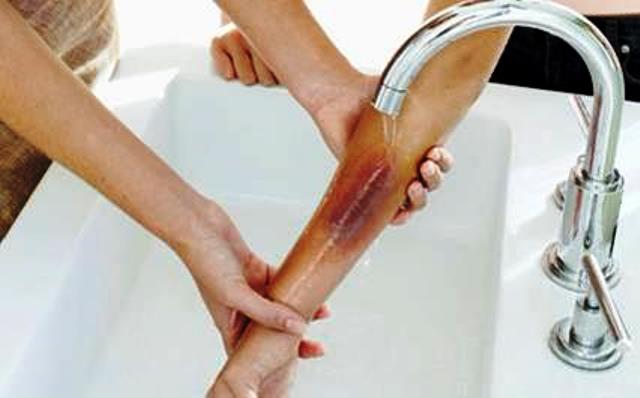
When suffering a burn, the wound should be cooled under running water.
Note:
-
Do not place ice directly on the burn as it can cause frostbite and further skin damage.
-
Do not break blisters as they are prone to infection.
-
Do not give aspirin to children or adolescents.
For severe burns: The wound has a diameter larger than 5-8 cm or burns occur in areas such as the hands, feet, face, groin, buttocks, major joints... The most severe burns are often painless and can damage all layers of skin, fat, muscles, and even reach the bone. The affected area may be blackened or dry and white, and the patient may have difficulty breathing. First aid steps include:
-
Remove the patient from the fire, smoke, and hot environment.
-
Check circulation signs (breathing, coughing, or movement), and perform emergency resuscitation if necessary.
-
Cover the burn area with a sterile moist bandage, clean moist clothing, or a damp cloth.
-
Call emergency services immediately or seek help from the nearest medical personnel.
-
Note: Do not immerse severe and large-area burns in cold water as it may cause shock.
-
Fractures of the neck, arms, or legs
If you notice signs of fracture such as deformity of limbs or joints, heavy bleeding, pain with slight pressure or movement, bone protruding through the skin, injured fingertips or toes, numbness, or bluish discoloration... Take the victim to emergency care as soon as possible. While waiting for medical intervention, caregivers should:
-
Control bleeding: Apply firm pressure on the wound using a sterile bandage or clean cloth/clothing.
-
Immobilize the injured area and splint the fracture if you have been trained. Do not attempt to realign the bones if untrained.
-
Apply ice packs to reduce swelling and relieve pain. Do not apply ice directly to the skin—wrap it in a towel, cloth, or other material first.
-
Position the victim lying down with the head slightly lower than the body and elevate the legs to prevent shock.
-
Choking
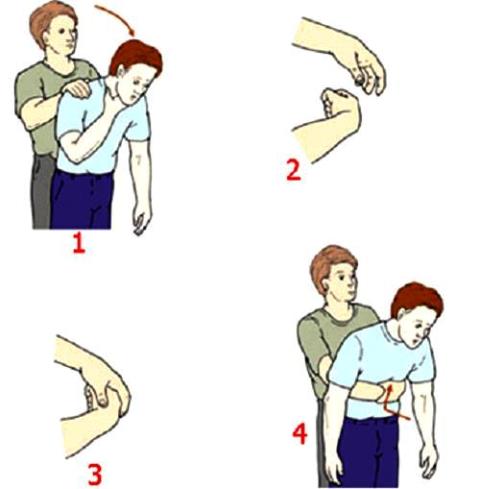
Abdominal thrust method (also known as the Heimlich maneuver).
When an adult or older child is choking, perform the abdominal thrust (Heimlich maneuver) as shown in the illustration below to create pressure that pushes the foreign object out.
-
For infants, hold the baby face down on your forearm with the head lower than the body. Use your hand to give 5 gentle but firm and quick back blows until the object is expelled.
-
In severe cases, or if the object does not come out after first aid, call emergency services immediately or seek urgent help from medical personnel.
4. Electric shock:
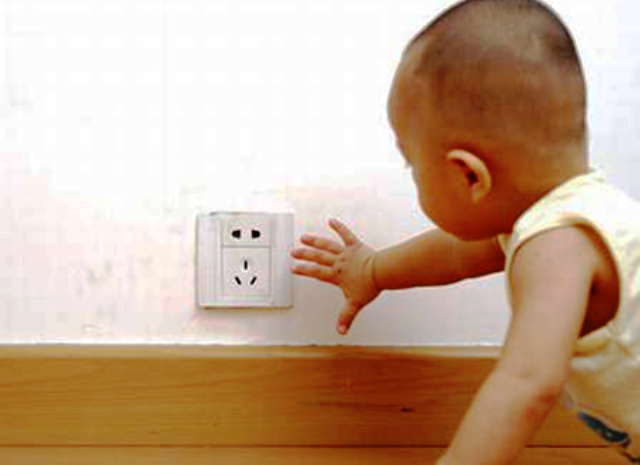
To prevent electric shock, electrical outlets should not be installed within children’s reach.
First aid steps for electric shock are as follows:
• Turn off the power source contacting the patient. Use non-conductive materials such as cardboard, plastic, or wood to disconnect the power.
• Check for signs of circulation and breathing; perform artificial respiration if necessary.
• Lay the victim down with the head slightly lower than the body and elevate the legs to prevent shock.
• Call emergency services immediately if the victim shows symptoms such as irregular heartbeat or cardiac arrest, respiratory failure, cyanosis, loss of breath, pain and muscle spasms, seizures, numbness and tinnitus, unconsciousness, etc.
5. Cuts and finger injuries
• Stop bleeding: gently press the wound with clean cloth or bandage, hold for 20 to 30 minutes.
• Clean the wound with clean water. Do not use soap.
• Use clean tweezers and alcohol to remove any foreign objects if present.
• For severe wounds, promptly go to the nearest hospital to prevent infection and tetanus.
In the case of a severed hand or finger:
• Wrap the severed part in clean cloth or plastic bag, then wrap it with 2-3 layers of plastic and place it in an icebox.
• Place a firm object like a bottle cap or pen 3-5 cm above the wound, apply a tourniquet or soft cloth tightly to stop the bleeding. Gradually twist the tourniquet until bleeding stops.
• Lay the victim down with head low and legs elevated, keep the body warm. Loosen the tourniquet briefly every 15 minutes.
• Transport the victim to the hospital as soon as possible, keeping them lying down. Do not delay more than 18 hours.
Note: Avoid water contact with the severed part. Do not apply hydrogen peroxide, iodine, or iodine-containing solutions directly to open wounds as they may irritate living tissue.
6. Sprains
Sprains usually occur at the ankle, knee, or foot arch. Ligaments swell quickly and cause pain. First aid steps include:
• Immobilize the injured area to avoid further damage.
• Apply cold compresses using a cold towel, wet cloth, or ice pack filled with cold water. Apply ice as soon as possible but avoid prolonged icing to prevent tissue damage.
• Elevate the injured limb whenever possible to reduce swelling.
• Take the victim to the hospital for proper examination and treatment.
7. Fever and seizures
• Lay the child on a flat surface, place them on their side, with the head slightly tilted back and supported to prevent vomit or foam from blocking the airway, which could be life-threatening. Ensure good ventilation. Loosen tight clothing, especially around the neck, or remove clothes if necessary.
• Use a clean cloth soaked in warm water, wring it out, and wipe the child’s body, especially the groin, armpits, neck, and forehead. Continue wiping until the seizure stops.
• For high fever and seizures where the child cannot take oral medicine, administer rectal fever reducers at doses of 10–15 mg/kg of body weight. For example, a 10 kg child should receive about 100–150 mg of paracetamol.
• Quickly take the child to the emergency room for early treatment and to prevent seizure recurrence.
For any questions, please contact:
Saigon Tam Tri General Hospital
Address: 171 Truong Chinh, Dong Hung Thuan Ward, Ho Chi Minh City
Appointment booking: 0974 508 479 or 028 6260 1100
Corporate health check: 0985 095 100
Emergency 24/7: 0901 696 115
Website: https://bvtamtrisaigon.com.vn
Other service :
- The Best General Health Check-up in District 12 at Tam Tri Saigon Hospital
- Vaccine Packages for Children Aged 2 to 24 Months
- Dental Care Packages
- Medical Examination Packages
- Disease Screening Packages
- Complete Maternity Care – Peace of Mind for a Safe Delivery at Tam Tri Saigon
- Partnering in Corporate Health Care
- Pre-Marital Health Check-up Package
- Các gói khám sức khoẻ

 Vietnamese
Vietnamese English
English



